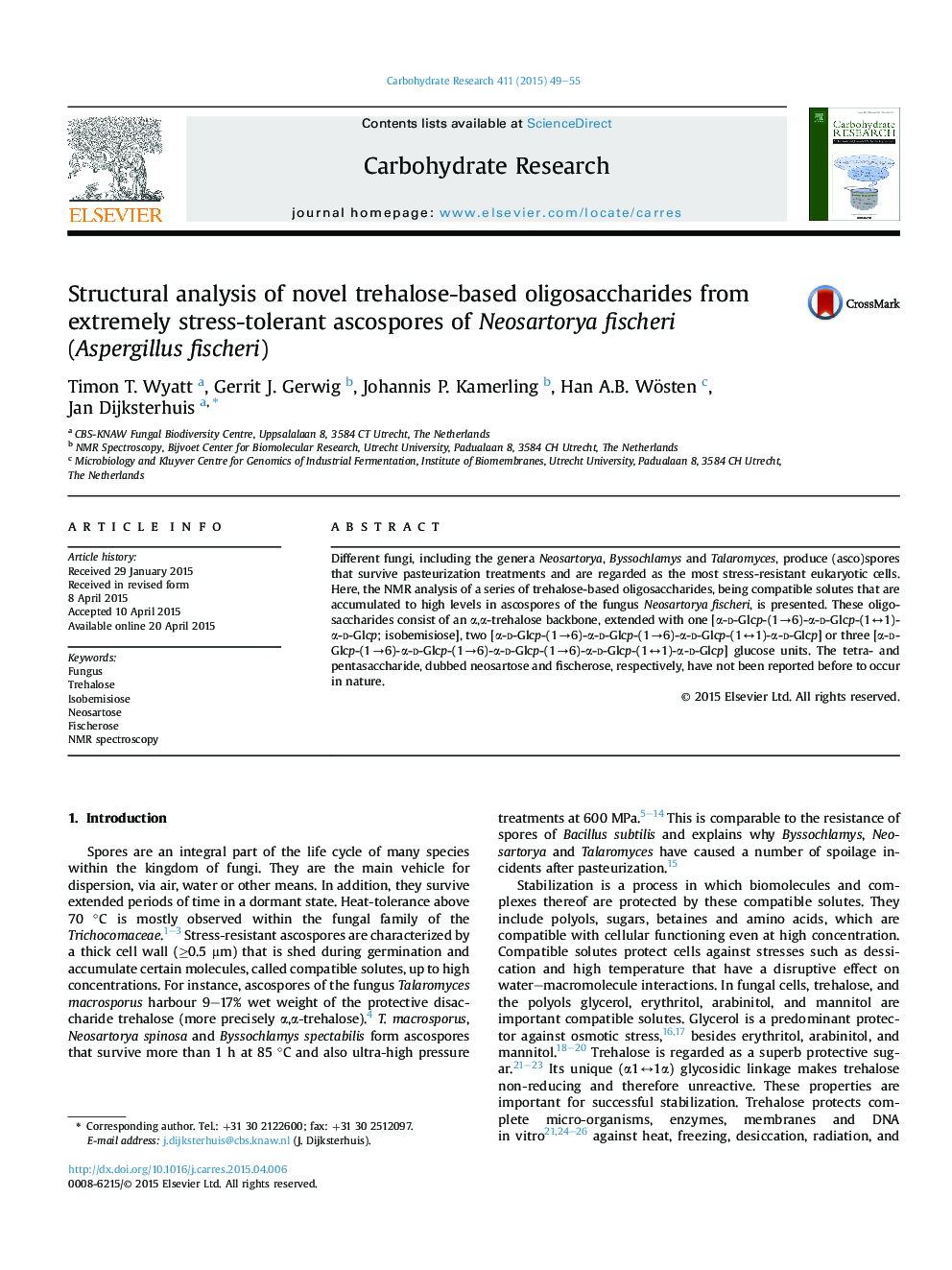| Article ID | Journal | Published Year | Pages | File Type |
|---|---|---|---|---|
| 1388345 | Carbohydrate Research | 2015 | 7 Pages |
•Stress-resistant ascospores accumulate mixtures of novel compatible solutes.•These oligosaccharides contain an α,α-trehalose backbone.•One, two or three glucose units are present at one side of the trehalose core.•Two trehalose-based oligosaccharides are never reported in nature before.
Different fungi, including the genera Neosartorya, Byssochlamys and Talaromyces, produce (asco)spores that survive pasteurization treatments and are regarded as the most stress-resistant eukaryotic cells. Here, the NMR analysis of a series of trehalose-based oligosaccharides, being compatible solutes that are accumulated to high levels in ascospores of the fungus Neosartorya fischeri, is presented. These oligosaccharides consist of an α,α-trehalose backbone, extended with one [α-d-Glcp-(1→6)-α-d-Glcp-(1↔1)-α-d-Glcp; isobemisiose], two [α-d-Glcp-(1→6)-α-d-Glcp-(1→6)-α-d-Glcp-(1↔1)-α-d-Glcp] or three [α-d-Glcp-(1→6)-α-d-Glcp-(1→6)-α-d-Glcp-(1→6)-α-d-Glcp-(1↔1)-α-d-Glcp] glucose units. The tetra- and pentasaccharide, dubbed neosartose and fischerose, respectively, have not been reported before to occur in nature.
Graphical abstractFigure optionsDownload full-size imageDownload as PowerPoint slide
